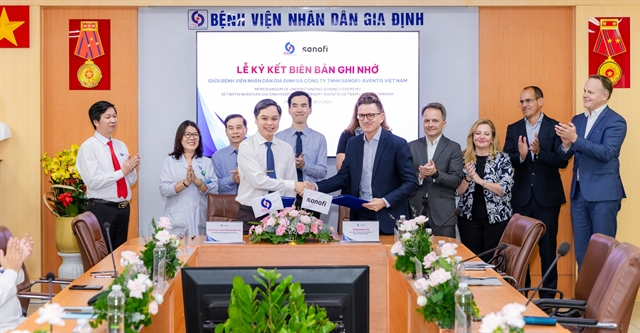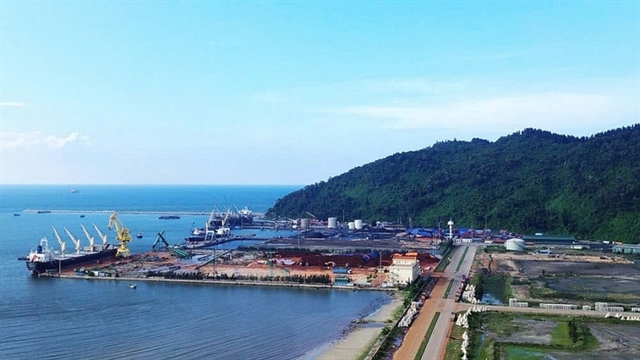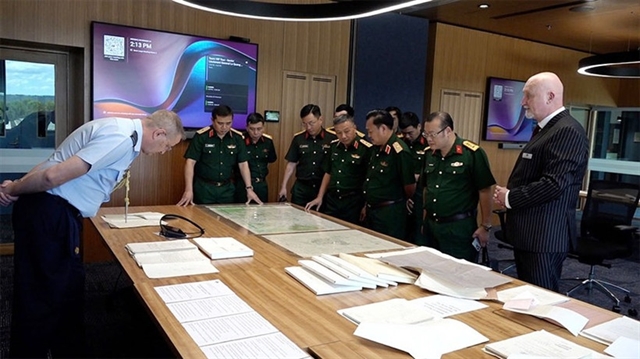 Economy
Economy

 |
| Chân Mây Port in Huế City is set to develop into a large transit port with an international logistics system. Photo thoibaotaichinhvietnam.vn |
HÀ NỘI — The central region holds significant potential for logistics development, but how to realise this potential, achieve international competitiveness, and position the sector as a key economic driver requires a unified strategy and supportive macroeconomic policies.
Deputy Minister of Industry and Trade Nguyễn Sinh Nhật Tân said the region serves as a crucial link between the country’s two largest growth poles – the North and the South – through a network of national highways, railways, seaports, and airports.
This strategic location has made the north-central and south-central coast a convergence point for goods—including raw materials, agricultural products, minerals, and manufactured and processed industrial products—not only serving the domestic market but also facilitating trade with neighbouring economies and beyond, he said.
He stressed that cross-border logistics will act as a strategic lever to unlock and foster the value of supply chains across the region.
With abundant advantages, many regional localities now see logistics as one of the key sectors for their future development.
Nguyễn Văn Phương, Chairman of the People's Committee of Huế City, noted that Huế aims to become a major hub in Southeast Asia by 2030. In that strategy, logistics has been identified as a key pillar for promoting green development. To utilise resources effectively and build on its strengths, Huế plans to advance digital transformation and the green economy. This includes integrating logistics with product value chains to enhance competitiveness.
Meanwhile, Lê Đức Tiến, Vice Chairman of the People’s Committee of Quảng Trị Province, stated that following its merger with Quảng Bình, Quảng Trị now possesses all the essential elements to become an interregional logistics hub, positioning itself as an important gateway and crucial link in both domestic and international inter-regional connectivity.
Deputy Minister Tân noted that despite its huge potential, the central region still faces several limitations hampering logistics development, including limited connectivity between seaports, railways, roads, and airports which results in high transport expenses compared to the regional average; a lack of modern logistics centres with multimodal connectivity; and a shortage of specialised policies for attracting large-scale logistics infrastructure investments. He also pointed to small- and medium-sized firms' modest resources for applying advanced management technologies, as well as weaknesses in high-quality manpower training and attraction.
Thang Khánh Hưng, Deputy Director of the Hào Hưng Co., Ltd., proposed the swift adoption of a single-window electronic system at seaports to reduce paperwork and advance digital logistics operations. He also recommended setting up a dedicated task force to help port businesses promptly address any challenges.
Trần Thanh Hải, Deputy Director of the Foreign Trade Agency under the Ministry of Industry and Trade, proposed that to accelerate logistics development, the central region must further increase the inflow of goods. He also emphasised the need to establish free trade zones at seaports, border gates, and airports.
Hồ Xuân Hòe, Director of Quảng Trị’s Department of Industry and Trade, perceived that policies on tax incentives, customs procedures, and an integrated single-window system need to be harmonised to enable goods passing through localities along the East – West Economic Corridor and the Greater Mekong Subregion to move efficiently, transparently, and at minimal cost. — VNA/VNS




